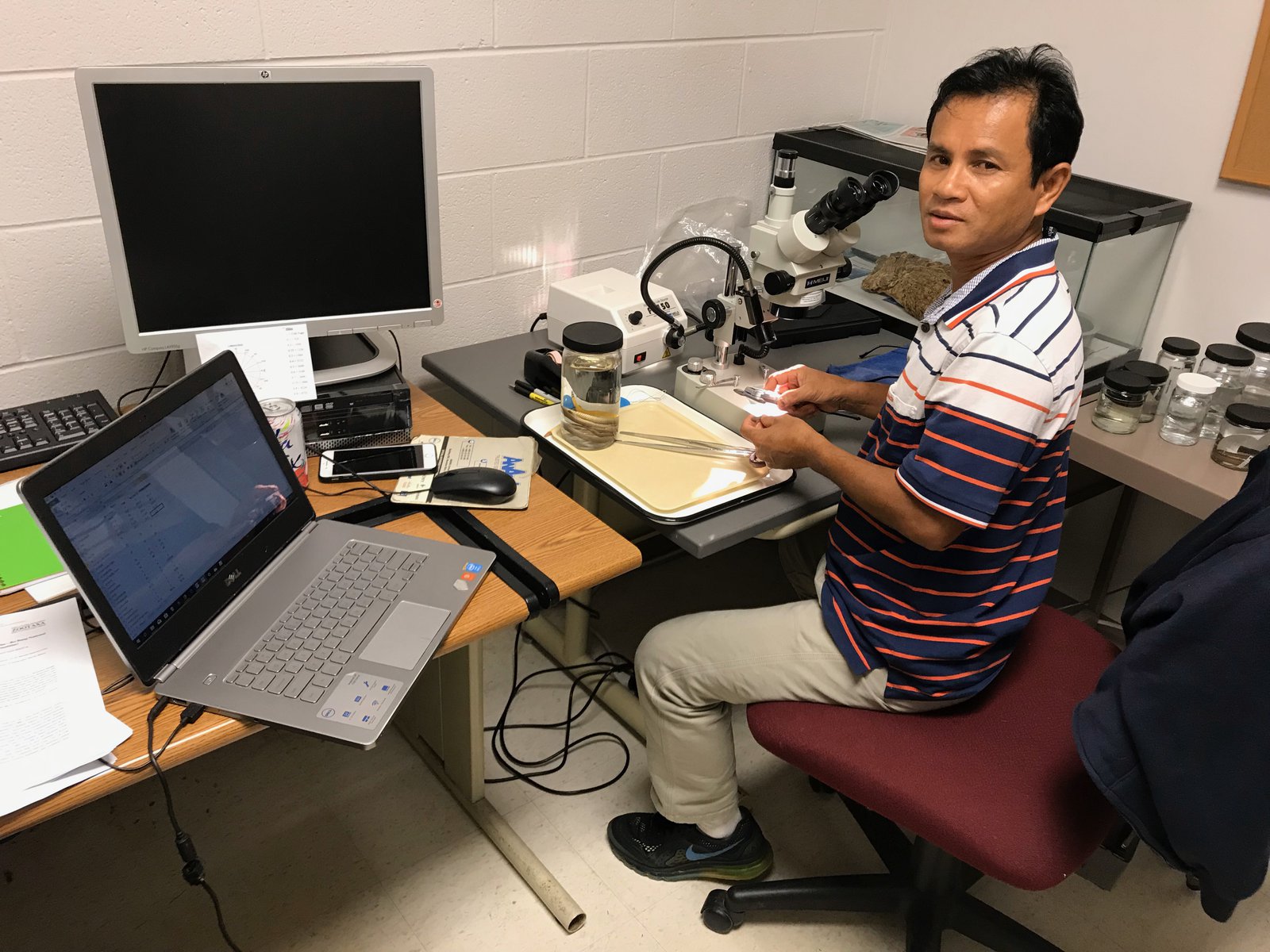The Leaf-litter Frog mystery in the Cardamom Mountains, Cambodia
Although Leaf-litter Frogs are found throughout the forests of Southeast Asia, only a single individual of an unknown species had been recorded in the vast Cardamom Mountains. This has now changed, with the scientific discovery of the Cardamom Leaf-Litter Frog, named in honour of Cambodian Herpetologist, Thy Neang.
Throughout the hilly evergreen forests of Southeast Asia, a group of small, forest-dwelling “Leaf-litter Frogs” (Leptobrachella) can commonly be found. However, for a long time the strange exception to this rule appeared to be the Cardamom Mountains, in southwestern Cambodia and adjacent Thailand. Although these Mountains appeared to be perfect the place for Leaf-litter Frogs to be found in abundance, only a single individual - a young frog that had just transformed from a tadpole and still with tail attached - had ever been found in the Cardamom Mountains. That specimen could not be identified to species with certainty because of its transformative stage, leaving us to wonder what species of Leaf-litter Frog occurs in the Cardamom Mountains, and why they have not been more frequently encountered?

Cardamom Leaf-litter Frog (Leptobrachella neangi).
Image: Thy Neang© Thy Neang
In December 2010, two adult female Leaf-litter Frogs were collected in the Cardamom Mountains by Cambodian biologists Thy Neang and Meanrith Kris. Their important discovery provided us with just enough data on adult morphology and genetics to formally describe the species to science. We are pleased to introduce the Cardamoms Leaf-litter Frog (Leptobrachella neangi), named in honor of its collector, and our friend and colleague, Cambodian herpetologist Thy Neang.

Bryan Stuart, Thy Neang and Jodi Rowley in the field in Virachey National Park, Cambodia (2007).
Image: Jodi Rowley© Jodi Rowley
For centuries, species diversity in Leaf-litter Frogs was greatly overlooked, and only a handful of species were thought to exist over large geographic areas in Southeast Asia. However, following new field work and especially the use of genetics and frog call data, many more species of Leaf-litter Frogs are now recognised – well over 70 to date. Many of these species have small geographic ranges, limited to only a single mountain block, and in some areas two or more species of Leaf-litter frogs coexist together along the same forested streams.
The relatively isolated Cardamom Mountains of southwestern Cambodia (and in a small part of adjacent southeastern Thailand), home to the Cardamoms Leaf-litter Frog, contain the highest, wettest and largest tract of evergreen forest remaining in Cambodia. These isolated mountains contain other species of amphibians and reptiles that only occur in the Cardamom Mountains, several of which have been discovered and described by Thy Neang. Our genetic analyses showed that the Cardamom Leaf-litter Frog is most closely related to two species that occur in the hilly evergreen forests of western Thailand, far across the low-lying floodplains of central Thailand that are inhospitable to the mountain-dwelling Leaf-litter Frogs.

Thy Neang at the North Carolina Museum of Natural Sciences, USA.
Image: Bryan Stuart© Bryan Stuart
Thy has made tremendous contributions to the herpetology of his country, and we are privileged to have worked with Thy since 2003 (Dr Bryan Stuart) and 2007 (Dr Jodi Rowley), including on the collaborative discoveries and descriptions of the other two Leaf-litter Frog species known from Cambodia, in the Annamite Mountains in the northeastern part of the country (Leptobrachella melica and Leptobrachella isos). As in many parts of the world, the biodiversity of the Cardamom Mountains is under threat, and scientifically naming the species that occur there is an important step towards ensuring their conservation. Much remains to be discovered in these mysterious forests - and Thy is leading the way.
Dr Jodi Rowley, Curator, Amphibian & Reptile Conservation Biology, Australian Museum Research Institute & UNSW Sydney.
Dr Bryan Stuart, Research Curator, Herpetology, North Carolina Museum of Natural Sciences, USA.
More information
Stuart, B. L. & Rowley,J.J.L (2020). A new Leptobrachella (Anura: Megophryidae) from the Cardamom Mountains of Cambodia. Zootaxa 4834 (4): 556–572.

